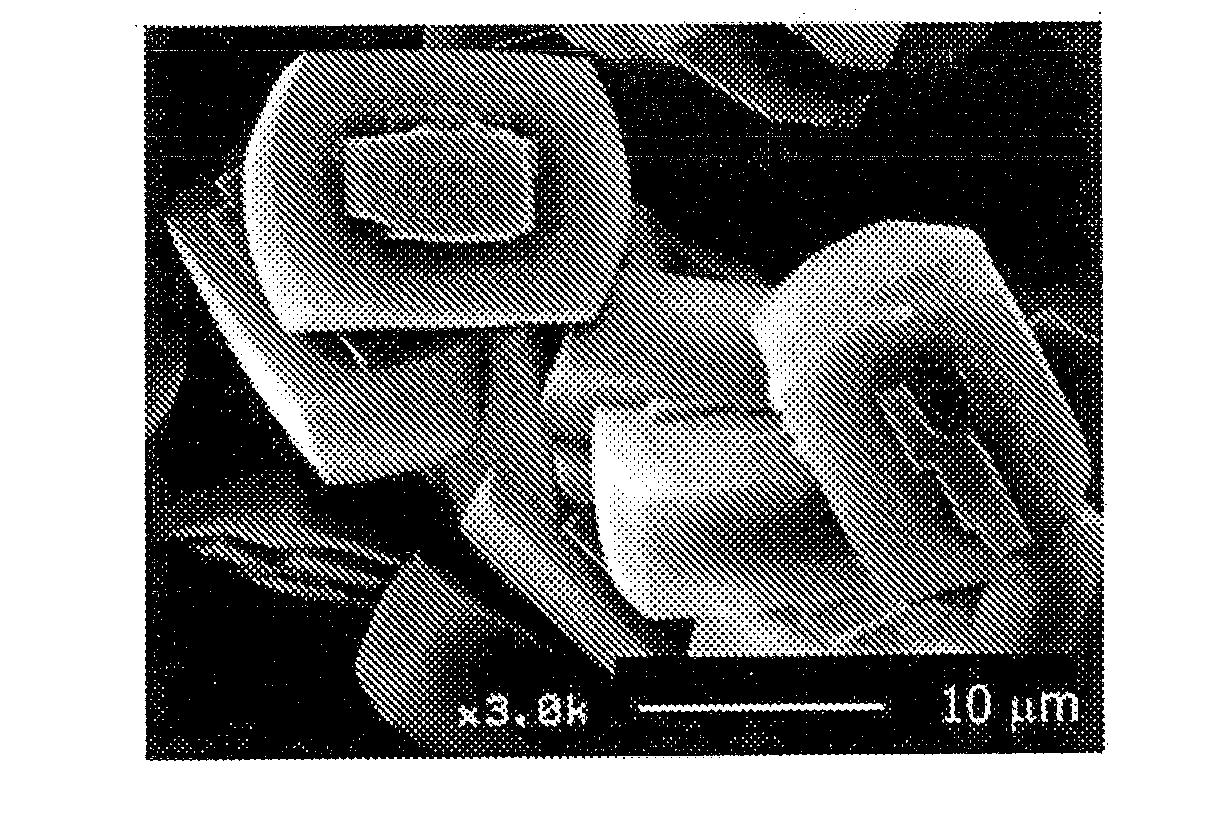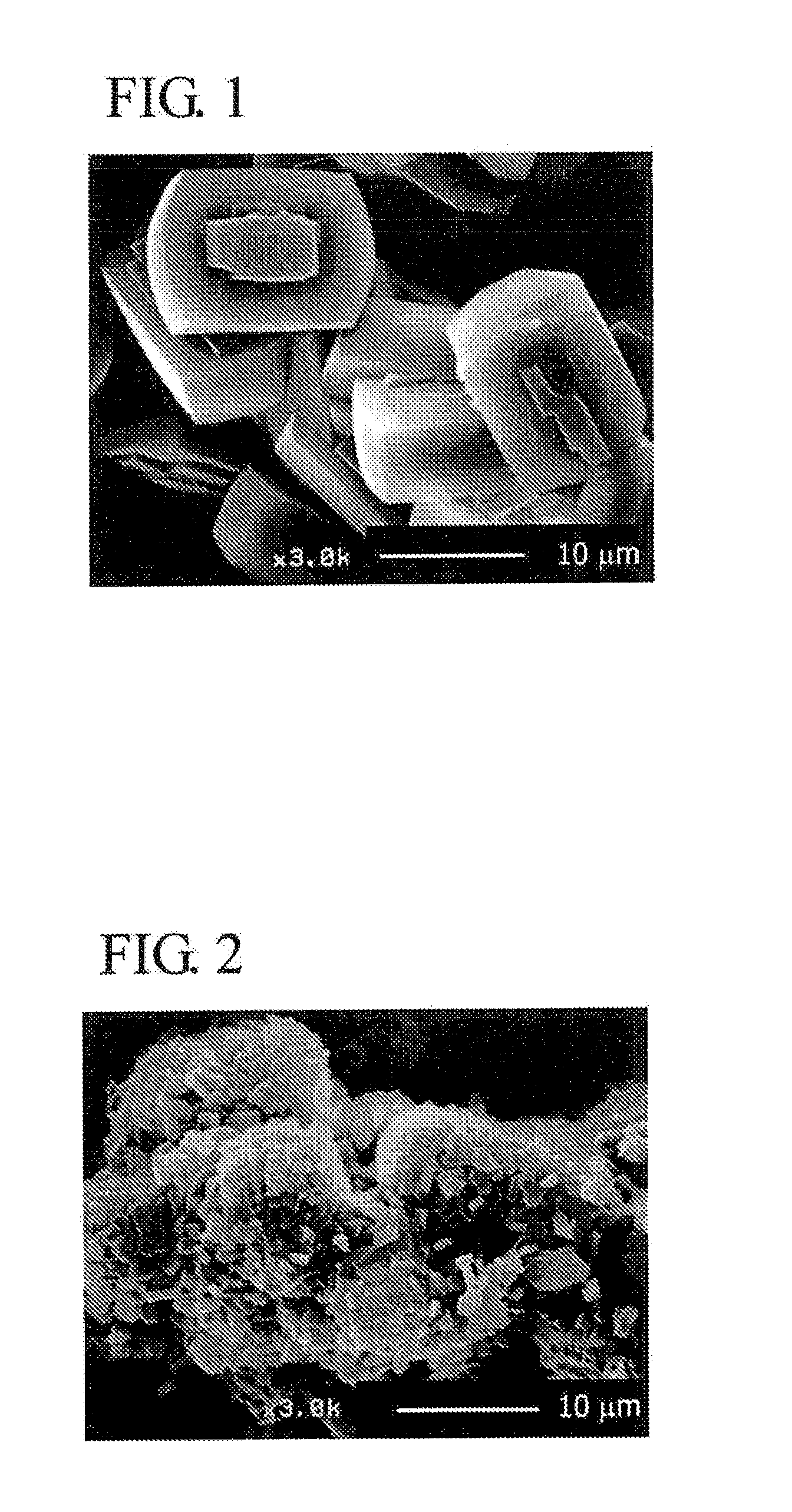Method of producing para-substituted aromatic hydrocarbon
a technology of aromatic hydrocarbons and substituted hydrocarbons, which is applied in the field of parasubstituted aromatic hydrocarbon production, can solve the problems of short service life of catalysts, high operating costs, and inability to efficiently produce parasubstituted aromatic hydrocarbons of high purity, and achieve the effect of reducing the burden of the second step being high in the running cost, reducing the purity of paraxylene, and high purity
- Summary
- Abstract
- Description
- Claims
- Application Information
AI Technical Summary
Benefits of technology
Problems solved by technology
Method used
Image
Examples
examples
[0071]The following examples are given in illustration of the invention and are not intended as limitations thereof.
[0072][Catalyst a and Catalyst B]
[0073]Colloidal silica (ST-S made by Nissan Chemical Industries, Ltd. 30 weight % of silica), aluminum nitrate, sodium hydroxide, tetrapropyl ammonium bromide (TPABr) and deionized water are mixed at a ratio of SiO2:Al2O3:Na2O:TPABr:H2O=3.5:0, 025:0,05:0, 5:120 (molar ratio, silica source, alumina source and sodium source are molar ratio based on oxide), which are hydrothermally synthesized at 180° C. for 24 hours and then sintered at 550° C. for 5 hours to obtain ZSM-5 zeolite (catalyst A).
[0074]Next, a sol for the formation of silicalite membrane is prepared by using colloidal silica, tetrapropyl ammonium hydroxide (TPAOH), ethanol (ETOH) and deionized water at a ratio of SiO2:TPAOH:ETOH:H2O=2:0.5:0.8:120 (molar ratio), The sol for the formation of silicalite membrane is applied onto the whole surface of individual particles of ZSM-5 ...
examples a-[UNK]-2
Examples A-1˜A-2
[0076]In a fixed layer reaction vessel of 4 mm in inner diameter is filled 0.05 g of the catalyst B by diluting with glass beads of 1.0 mmφ to form a catalyst layer having a length of 20 mm, and 0.82 mmol / hr of toluene, 0.82 mmol / hr (Example A-1) or 2.46 mmol / hr (Example A-2) of methanol and 17 ml / min of helium gas are supplied thereto to conduct alkylation reaction of toluene at 400° C. under an atmospheric pressure. After 1 hour and 3 hours from reaction start, a product at an outlet of the reaction vessel is analyzed through a gas chromatography to measure a ratio of isomers formed. The results are shown in Table 1, and the measuring conditions of the gas chromatography are shown below.
[0077]Measuring apparatus: GC-14A made by Shimadzu Corporation
[0078]Column: capillary column Xylene Master made by Shinwa Kako Co., Ltd. inner diameter 0.32 mm, 50 m
[0079]Temperature condition: column temperature 50° C., temperature rising rate 2° C. / min, detector (FID) temperature ...
examples a-[UNK]-4
Examples A-3˜A-4
[0081]The alkylation of toluene is carried out under the same conditions as in Examples A-1˜A-2 except that the molar ratio of methanol / toluene is 0.4 (Example A-3) and 10.0 (Example A-4), respectively. The results are shown in Table 1.
PUM
| Property | Measurement | Unit |
|---|---|---|
| particle size | aaaaa | aaaaa |
| carbon number | aaaaa | aaaaa |
| particle size | aaaaa | aaaaa |
Abstract
Description
Claims
Application Information
 Login to View More
Login to View More - R&D
- Intellectual Property
- Life Sciences
- Materials
- Tech Scout
- Unparalleled Data Quality
- Higher Quality Content
- 60% Fewer Hallucinations
Browse by: Latest US Patents, China's latest patents, Technical Efficacy Thesaurus, Application Domain, Technology Topic, Popular Technical Reports.
© 2025 PatSnap. All rights reserved.Legal|Privacy policy|Modern Slavery Act Transparency Statement|Sitemap|About US| Contact US: help@patsnap.com



